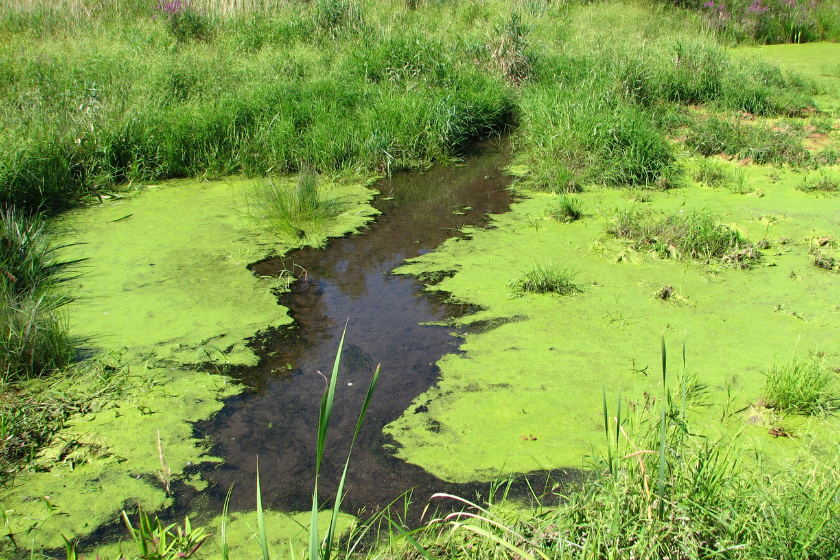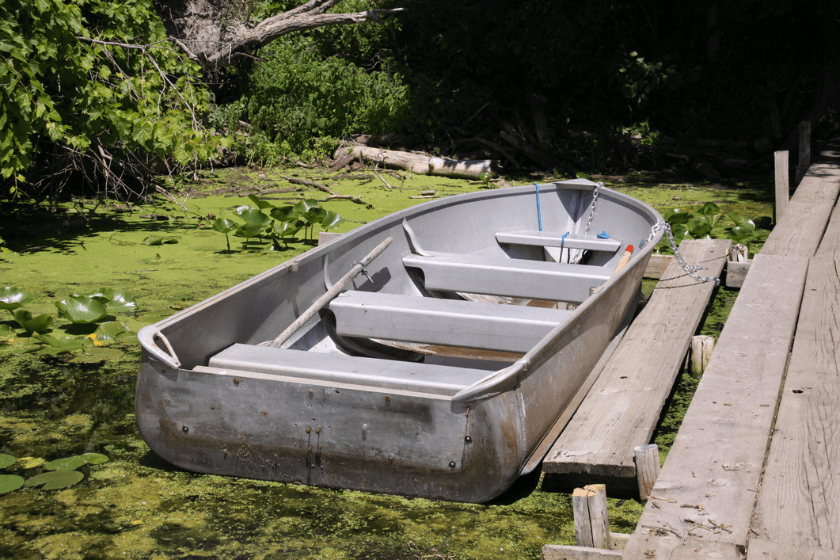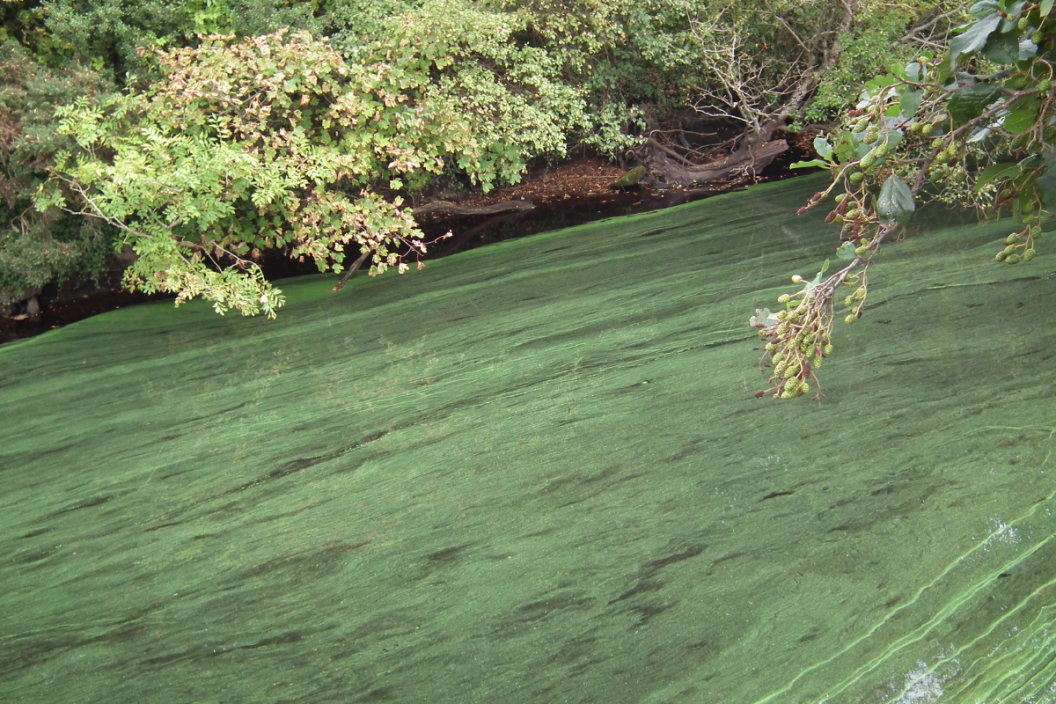Warm weather means fun in the sun, and more importantly, fun in the water. When temperatures heat up, it's tempting to cool down with your pup in a lake, river, or pond. Or, if you go hiking with your dog, it might be part of your routine to let them quench their thirst in the wild waters of the outdoors. This seems innocent enough, but there might be something hazardous hiding in your pet's favorite watering hole: blue-green algae.
Blue-green algae is a dangerous cyanobacteria that propagates in fresh water, causing blue-green algae blooms in bodies of water as small as your backyard pool and as large as a lake. Cyanobacteria are extremely toxic and can be very dangerous for pets. Since they're rather hard to spot with the naked eye, you'll have to follow a few extra summer safety tips to keep your pup safe during water season.
What is Blue-Green Algae?

Blue-green algae starts to grow when the weather reaches temperatures of 75 degrees or higher, which is why its effects are seen more in the mid- to late- summer. Cyanobacteria have a high toxicity level causing poisoning in cats, horses, dogs, birds, fish, and even people. The poisoning is caused by the anatoxins and microcystins that are produced by the bacteria. In addition, the increase in phosphorus and nitrogen in the water helps the bacteria to thrive.
When the algae forms in the water, it can be challenging to spot. Sometimes the algae looks like a thin film across the top of the water. However, when the algae is in full bloom, the water looks a bit like pea soup. Pet owners should always check the surface of the water before letting their dogs enter the water to swim or drink.
Signs of Blue-Green Algae Poisoning
The Small Doors veterinary team tells WideOpenPets.com that blue-green algae is particularly damaging to dogs:
"Algal blooms are particularly dangerous to dogs as these contain cyanotoxins that affect the nervous system and/or the liver (depending on the species of algae). Ingestion of these while swimming or from drinking contaminated water can very rapidly result in gastrointestinal symptoms such as vomiting and diarrhea, as well as seizures, liver failure, and death. There is no specific remedy for cyanotoxins and treatment is limited to supportive care only, so these are best avoided."
Unfortunately, it's very easy for dogs to get blue-green algae poisoning. They do not even have to drink the water and can have an adverse reaction by simply playing in it. However, ingestion does have more severe consequences. If your dog drinks water with toxic blue-green algae, they can suffer from neurological or liver damage.
If your dog has been in or near water sources that have algal blooms, be sure to look out for toxicity symptoms such as:
- Panting
- Seizures
- Excessive drooling
- Respiratory failure
- Disorientation
- Vomiting
- Diarrhea
- Liver Failure
Other clinical signs of poisoning include things like jaundice, tarry stool, and difficulty breathing. If the toxicity progresses far enough to affect liver function, look for things like excess secretions or salivation, and pale mucous membranes, or blue discoloration of the skin and mucous membranes.
Anatoxins are what cause a neurological reaction. Some neurologic signs to watch out for are muscle tremors, muscle rigidity, and eventually death.
Algae Poisoning Treatment

It is essential to take your pet to the vet before the blue-green algae toxicity progresses too far. Veterinary treatment will be vital to help them recover, but it only helps if you catch it right away. If the toxicity progresses too far, the only option will be to euthanize the dog.
Some treatments to neutralize the toxin are activated charcoal to absorb the algae and intravenous fluids to rehydrate your dog and help reduce shock and support the function of their organs.
If your dog has seizures, then your vet can administer anti-seizure medication to get them under control. Unfortunately, it can take a long time for dogs to recover, ranging from weeks to months. The dogs that do recover from cyanotoxin poisoning will likely have long-lasting effects like liver damage. They will likely require ongoing veterinary support as well.
Have you ever seen blue-green algae? Let us know on our Wide Open Pets Facebook page.




